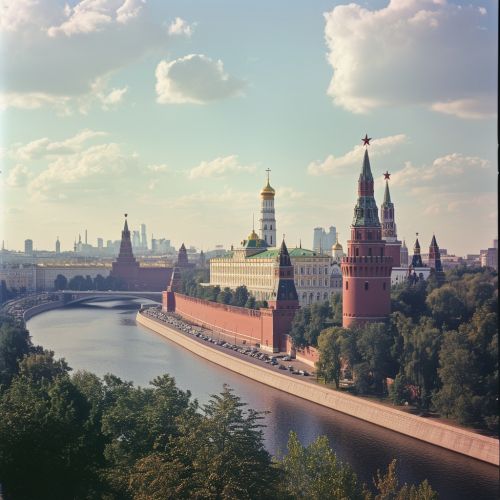Government of the Soviet Union
Structure of Government
The Soviet Government, also known as the Union of Soviet Socialist Republics (USSR), was a federal socialist state that existed from 1922 to 1991. It was a one-party state governed by the Communist Party with Moscow as its capital in its largest republic, the Russian SFSR. The Soviet Union had its roots in the October Revolution of 1917 when the Bolsheviks, led by Vladimir Lenin, overthrew the Russian Provisional Government which had replaced Tsar Nicholas II.


The government of the Soviet Union was based on the one-party rule of the Communist Party (Bolsheviks), modelled on the dictatorship of the proletariat. This was characterized by the supremacy of the Communist Party, a highly centralized state, and a planned economy. The political structure of the Soviet Union was defined by its constitution, which was promulgated in 1924, 1936 and 1977.
Communist Party
The Communist Party was the founding and ruling political party of the Soviet Union. The party was founded in 1912 by the Bolsheviks, a majority faction detached from the Russian Social Democratic Labour Party, led by Vladimir Lenin. The party was dissolved on 29 August 1991 on Soviet territory soon after a failed coup d'état and was completely outlawed three months later.
Executive Branch
The executive branch was headed by the Premier, who was appointed by the Supreme Soviet. The Premier was the head of government and held the second highest office in the Soviet Union, after the General Secretary of the Communist Party. The Premier was responsible for the administration of the national economy, domestic policy, and foreign policy. He was also responsible for the implementation of directives of the Communist Party and the Soviet government.
Legislative Branch
The legislative branch was embodied in the Supreme Soviet, which was the highest legislative body in the country. It was composed of two chambers: the Soviet of the Union and the Soviet of Nationalities. The Supreme Soviet was responsible for the passage of laws, amendments to the constitution, and the ratification of international treaties.
Judicial Branch
The judicial branch was represented by the Supreme Court, which was the highest court in the land. It was responsible for the interpretation of laws and the administration of justice. The Supreme Court was composed of a Chief Justice, several Deputy Chief Justices, and other judges.
Economic System
The economic system of the Soviet Union was based on a system of state ownership of the means of production, collective farming, industrial manufacturing and centralized administrative planning. The economy was characterized by state control of investment, public ownership of industrial assets, macroeconomic stability, negligible unemployment and high job security.
Dissolution of the Soviet Union
The dissolution of the Soviet Union was a process of change resulting from a series of political and economic reforms that led to the disintegration of the Soviet Union and the end of Communist Party rule. This process culminated in a series of events that took place from 1988 to 1991, leading to the dissolution of the Soviet Union on December 26, 1991.
